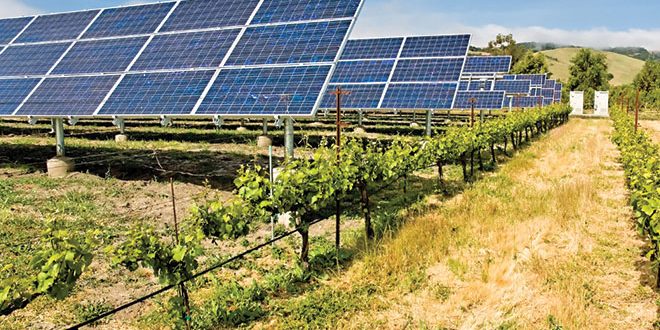ABOVE: To reach Australia’s net zero goal by 2050, overcoming initial constraints in the growing alternative energy market will be key to change.
The estimated annual cost of energy is already approximately $5.85 billion for the Australian agricultural sector, but this is set to soar as electricity prices double by 2024, according to a recent federal government forecast.
Over the next two years, primary producers will be forced to make significant changes to their energy consumption practices to remain profitable and attainable for consumers.
The ability of agricultural businesses to stay globally competitive will also be heavily dependent on the proportionate cost of energy.
On-farm renewable energy systems are being touted as a significant solution for farmers from a long-term cost-saving perspective, but they will also play a seismic role in our national transition towards net zero carbon emissions by 2050.
Since 2000, energy consumption from renewable sources in Australia has increased from 270 billion joules to 420 billion joules, while consumption is relatively low at seven percent in the context of Australia’s total energy consumption of six trillion joules.
Up until now there have been very few resources developed to identify suitable alternative energy solutions for a broad range of agri-businesses and their return on investment.
Eight steps to an alternative future
AgriFutures Australia recently published a series of short reports specifically for primary producers, outlining the methodology of eight ready-for-market renewable energy solutions with a step-by-step guide on how to begin the process of integration into on-farm practices.
The series is the first of its kind in Australia, with a strong focus on:
- Solar panels
- Wind power
- Bioenergy
- Hydro power
- Battery storage
- Hydrogen
AgriFutures Australia manager for national rural issues Jane Knight said AgriFutures Australia’s research – captured in the eight short reports – reveals key pathways to adopting alternative energy and includes case studies sharing where it is already in use in rural industries across Australia and information on its affordability.
Crucially, the research highlights the sector-wide opportunity for change.
“Australian agriculture is under growing pressure to reduce emissions across the sector,” Ms Knight said.
“Finding innovations and new technologies that allow industry to change existing practices will be essential in decarbonising and avoiding future greenhouse gas emissions.
“These reports provide a strong basis to support Australian agriculture on this journey.
“There are already a number of innovative producers that have successfully adopted renewable alternatives, including Rosnay Organic Wines and Meredith Dairy, and this work will support others to embrace alternate energy.”
On track to net-zero goal
While the AgriFutures Australia research acknowledges economies of scale within agriculture can be a constraining factor, the potential benefits are a strong motivator.
Alternative energy is expected to create an average of 34,000 new jobs annually to 2035.
To reach Australia’s net zero goal by 2050, Ms Knight recognises that overcoming initial constraints in the growing alternative energy market will be key to change.
“This research paves a way for change and there is a huge opportunity for Australia to learn from international best practice in all areas of transition and become a leader in energy innovation,” she said.

